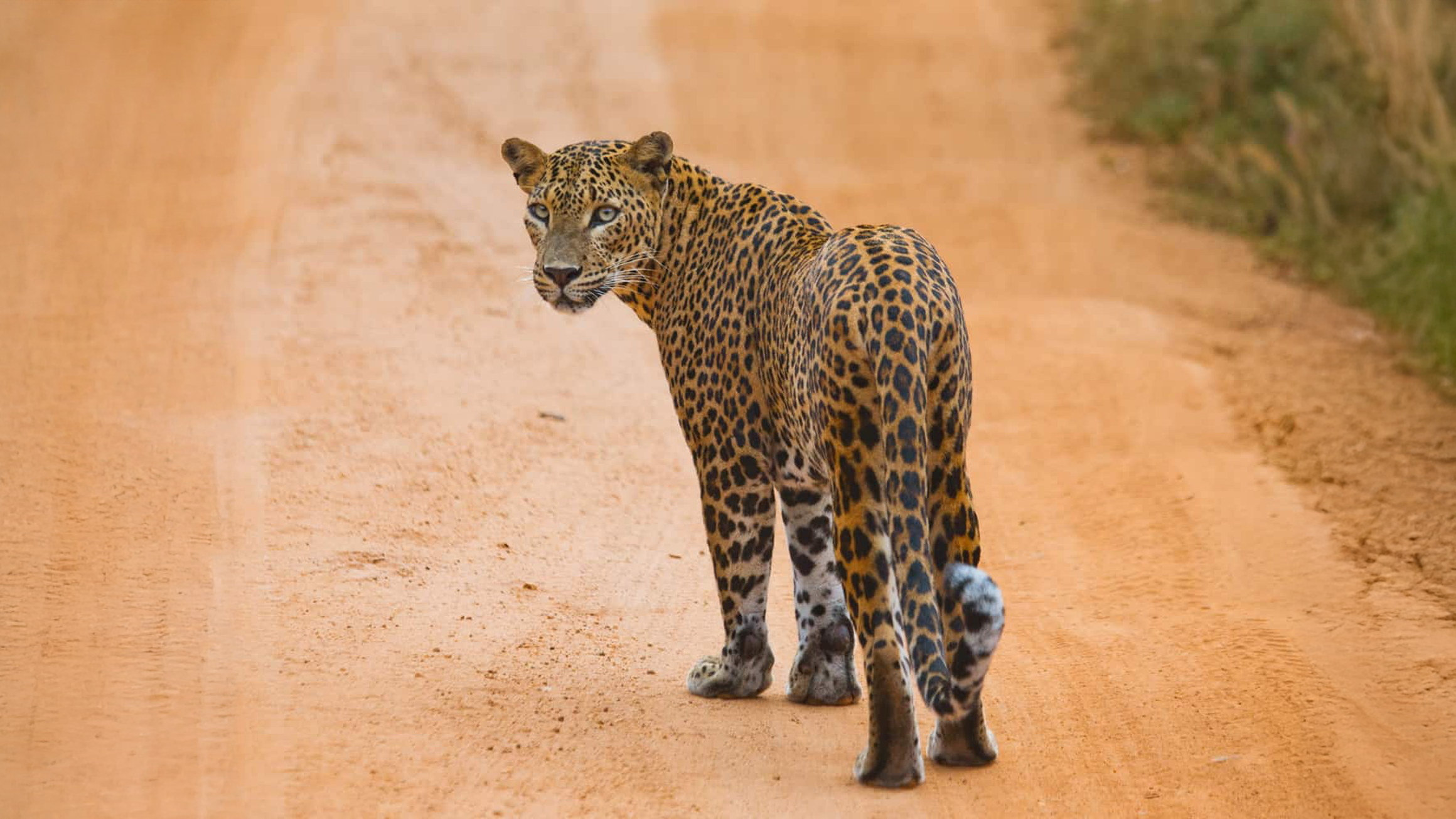MONGABAY – Malaka Rodrigo
COLOMBO — Located along Sri Lanka’s southeastern coast, Kumana National Park is renowned for its large waterbird colonies and its vital role in supporting diverse birdlife. However, the park is also emerging as an important habitat for the Sri Lankan leopard (Panthera pardus kotiya).
A recent study has confirmed the park’s significance as a stronghold for this elusive predator. Conducted by scientists from the University of Sri Jayewardenepura (USJ) and the Department of Wildlife Conservation DWC), the study found 41 leopards per 100 square kilometers (38.6 square miles) in the park’s eastern region, making Kumana one of the top leopard hotspots globally.

The research used advanced camera trap techniques and random encounter models (REMs), a method for estimating animal density. The study recorded more than 90 leopard encounters, including 34 identified individual leopards, during a 16-month survey. According to lead researcher Dulan Jayasekaraof the USJ Department of Zoology, “This is the first time REM technique has been used to estimate leopard density in Sri Lanka.” He added that it provides valuable insights despite limited resources.
The Sri Lankan leopard is now tagged as a species “vulnerable” to extinction, according to the IUCN Red List criteria. Researchers of Wilderness and Wildlife Conservation Trust (WWCT) estimate the leopard population in Sri Lanka is about 1,000 individuals, based on past estimates. Anjali Watson of WWCT said they are in the process of collating new information to do a fresh estimate at present.

Population studies
Population studies for the leopards were conducted in several parks before. Yala National Park, which has one of the highest leopard densities in the world, has recorded 77 leopards and has a density of 0.5461 per km2. Another study in Wilpattu National Park in the northwestern dry zone estimated a total density of 18 leopards per 100 km². An estimation of 11.7 leopards per 100 km2 was recorded in Horton Plains National Park.
In order to derive accurate estimates, there are many factors to be accounted for when conducting density-based population estimates for elusive species like leopards, Watson cautioned. It’s these density estimates that form the basis for calculating total population numbers, much as a census is conducted for humans, the leopard researcher said. She added that such study needs to be done using internationally accepted methodologies within a certain short time frame so as to account for immigration, emigration, residency and so on to prevent the numbers being bloated overall.

Kumana, covering more than 35,000 hectares (86,487 miles), is a largely underappreciated national park with significant biodiversity. It features dry-zone scrublands, monsoon forests, lagoons, mangroves, rocky outcrops and villus, unique shallow and seasonal wetlands found in lowland dry zone areas in Sri Lanka.
First declared a sanctuary in 1938 for its birdlife, Kumana became a national park in 1970 and was designated Sri Lanka’s fifth Ramsar wetland in 2010. The park remained inaccessible during the civil war due to its proximity to conflict zones but reopened in 2006. Initially, visitation was low, but Kumana has since gained popularity, especially for leopard sightings, according to park warden Dileep Samaranayaka.

With Sri Lanka’s “Big Five” animals, including the leopard, Kumana is seen as a potential alternative to Yala National Park in the south, which is famous for its daytime leopard sightings. Yala’s heavy visitor pressure has raised concerns, and Kumana’s growing popularity for leopard sightings could help ease this situation.
Meanwhile, a citizen science initiative called Kumana Leopards, started by wildlife enthusiasts, has documented 80 individual leopards in Kumana since 2019. This multiyear effort focuses on documenting leopard movements and behavior, based primarily on visitor observations.
The initiative, led by Shanaka Kalubowila and his team, also maintains a website that shares daily sightings and family lineage data, and it offers a field guide for identifying individual leopards. The initiative aims to continue its data collection to provide evidence-based insights into the conservation of the Sri Lankan leopard.

Threats to survival
Despite the high density, the leopards face threats from outside the park. They often venture beyond the park’s boundaries, where they are at risk of being killed by buffalo herders. Leopards sometimes prey on buffalo calves, leading to retaliatory poisoning by herders, which has resulted in several leopard deaths recently, Samaranayaka said.
Since time immemorial, the Pādā Yāthrā, a traditional foot pilgrimage from the north’s Jaffna to the southern Kataragama temple, has passed through Kumana National Park. Pilgrims traveling on foot have occasionally encountered leopards, leading to a few leopard attacks. The Kumana leopards are famed in folklore as formidable predators.

Historical accounts describe leopards in an area called Lenama within the Kumana ecosystem, where legend has it that the deity Kataragama sent these massive leopards to punish the Veddas, Indigenous people, for angering him by using wild boar fat in a ritual.
A recent study found that leopards in Kumana National Park are most active in rocky areas and near water bodies, where prey such as wild buffalo and spotted deer are abundant.

Banner image of a leopard resting on a log at Kumana National Park courtesy of Shanaka Kalubowila.











